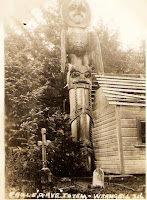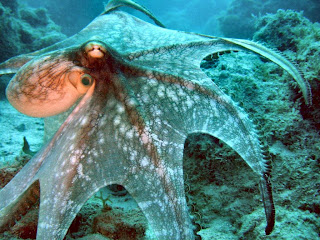Singing Whales to Shore
 |
| Copyright (c) Vivian Faith Prescott |
Now, it rests in her yard waiting to be placed into the local museum on loan. Children will soon walk by it, note its empty eye sockets, its long tusk-like face. Maybe they will imagine its fat slick skin, its blowhole dotted with barnacles, its throat grooves.
 |
| Copyright (c) Vivian Faith Prescott |
The whale skull is a gift from our ancestors. In my daughter's Tlingit mythology Raven once sung a whale to shore in order to eat the whale from the inside out. Among the Tlingit, in the Raven moiety, there is also a Whale House (Yaay Hít).
In my Saami culture whales are sacred yet practical creatures. Whalebone was a form of currency and whale hide was used to make rope. Whales are one of many symbols painted on shaman (noaide) drums; a means of transporting the shaman's soul to the spirit world. The whale can be a soul body for a shaman. "In the old days the noides were asked for advice in many matters. They were healers. They traveled with their soul bodies over the tundra, were on the lookout for game when hunger threatened. They sang fish into the net and whales up the beach" (Ailo Gaup, The Night Between Days).
 |
| Copyright (c) Vivian Faith Prescott |
My daughter stands beside me. Inside her is a new grandchild floating in its own sea. She has just learned she is having a boy. She tells me that the whale skull is a once-in-a-lifetime gift. Her baby is a gift. She has decided to name the baby Jonah. I say to her, "Maybe it was you who sang the whale to shore."


Comments